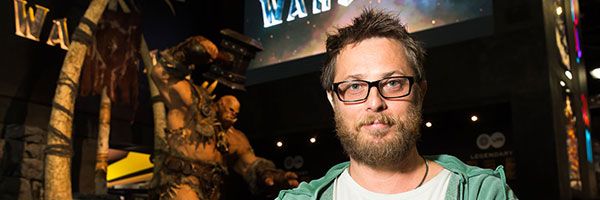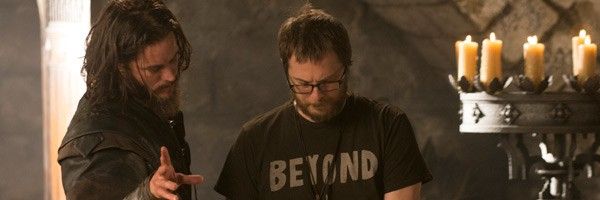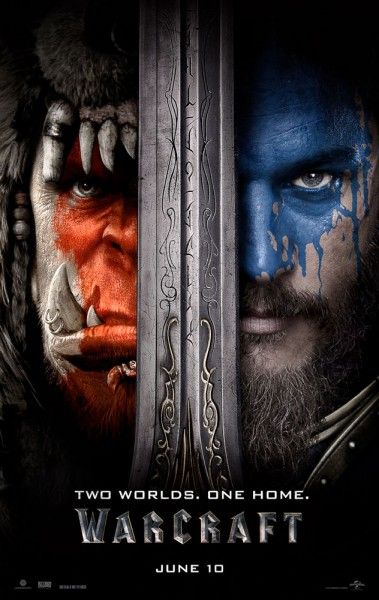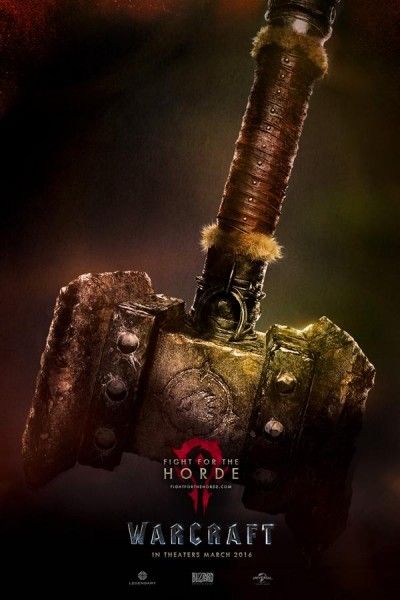If you’ve been following the development of the World of Warcraft movie over the years, you know that it took quite some time before Universal felt confident enough to give the film a greenlight. Even someone as talented as Sam Raimi had trouble finding a way to adapt the game that pleased both fans and non-gamers alike, and ultimately, with more than a little persistence, it was Moon and Source Code filmmaker Duncan Jones that was given the keys to the World of Warcraft franchise.
Jones—a self-professed fan of the game—offered a unique twist on how to bring Warcraft to the big screen: tell a story that balances both sides, orc and human, equally, with heroes and villains in each camp. Throw in some cutting-edge motion-capture technology that brings the orcs to life and a tone in line with Avatar meets Game of Thrones, and you’ve got yourself one of the most ambitious studio pictures in recent memory. Video game adaptations have thus far proven to be an impossible task, but it’s possible that Jones may well have cracked the code with Warcraft.
Last spring, I had the opportunity to visit the Vancouver set of Warcraft along with a handful of other journalists. While our visit was extensive as we got a look at the sets, tech, costumes, props, etc. and interviewed a good amount of the lead actors, one of the highlights was getting to watch Jones work while filming a big third act battle sequence. During a break in setups Jones came over and spoke briefly with us about the film, its many Easter Eggs (Leroy Jenkins?—maybe!), trying to hit a PG-13 rating, and more.
Question: So, you happy so far?
DUNCAN JONES: It's actually so much fun. I’m having a really good time.
Specifically, where is Leroy Jenkins?
JONES: (laughs) There’s a good amount for the Easter Egg spotters out there. There’s plenty of material to go around. Actually, speaking of Easter Eggs, there’s a Sam Raimi Easter Egg in there as well, a little doff of the cap. But you have to keep your eyes open for that.
I imagine you guys know the technology is progressing on every film, but all the time it's changing. And right now at this specific minute and time we're kind of on the forefront of what's being done. So, it's very exciting and having ILM do it. It’s giving them a chance to, you know, kick Weta in the teeth a little bit, show how it can be done. It's a good rivalry, I think, going on between those two places.
Is it changing your approach at all?
JONES: You know, in some ways there are things which have technically been difficult to achieve the way we planned, but then you get pay offs in other areas because the—the technology is really on the bleeding edge, there are things which are not going quite the way you want, but then there are other things like, “Oh, my God, that worked so well,” and we end up using it more. So, there's kind of this technology we're using where we'll actually record a performance with our Mocap actors until we get it to the point where we really love it. And then we'll actually let the actors just rest and we'll just shoot plates playing back that performance, you know, in an empty space. And then so the cameraman can see it through his viewfinder and we can actually frame shots with the perfect performance that’s just on empty plates.
It’s exactly where you need it to be.
JONES: Which is, yeah, really cool. You don't have to worry about continuity. You don't have to worry about performances being the same each take. So, that's been an unplanned for benefit of the system we're using. Yeah, very cool. But, it's not all VFX. So, I was gonna show you something which is very much in camera, which is kind of cool.
[Jones shows us an insanely cool practical effect that won’t be spoiled here. Suffice it to say, it involves a fully animatronic puppet.]
You guys are going for PG-13?
JONES: We are, we are going for PG-13. But this is a gray area on ratings that we’re—you know, we’re working out as we go along. But keeping our finger on the pulse and hopefully getting it just where it’s okay.
Was the Orc blood a different color?
JONES: Yeah we do have—oh, I got to be careful about that because there are some differentiations between races and within races, some things that differentiate it. But, that does all fit into the ratings thing as well, so there's a whole bunch of balls that you're juggling for ratings and then also for storytelling and for creating something which works, you know, in a Warcraft universe when you're not trying to make a horror movie, you know? It's getting that balance. I mean it's called Warcraft so there's a certain amount of violence involved. But, we have to get that right.
We saw the weapons and they look pretty lethal.
JONES: Did you see the size of the grips on that? Orcs are big. It was a weird phase when our props master was asking us, “Are you sure you want this weapon this big?” I was like “Yeah, yeah, yeah, we need it this big.” And it all comes together. Obviously, we get our performances with our very large motion capture actors. And then we also—and then there are certain scaling issues that we do after that. They quite have to have—they have quite big hands. I mean they fit into the Warcraft universe and they look real. So, it's very cool. And the weapons that you've seen, they can carry. So, that's ultimately what matters (laughs). And they can hit very hard. Thor, eat your heart out.
What side did you play?
JONES: I started off as a human warrior because every game I’m always a humor warrior. But then I went Orc just because I love Orcs.
Yeah, For the Horde always.
JONES: Both side, both sides. But that’s what the—I mean as you’ve probably heard, that’s what the film is trying to do is balance it, tell the story from both sides.
For more of my set visit coverage, peruse the links below.
- ‘Warcraft’: 35 Things to Know About Universal's Massively Ambitious Epic Fantasy
- How 'Warcraft' Aims to Break the Video Game Movie Curse Once and for All
- ‘Warcraft’: Rob Kazinsky Nerds Out on Playing an Orc, the Doomhammer, and Sequels
- New 'Warcraft' Images Feature Orcs, Humans, and Something in Between





